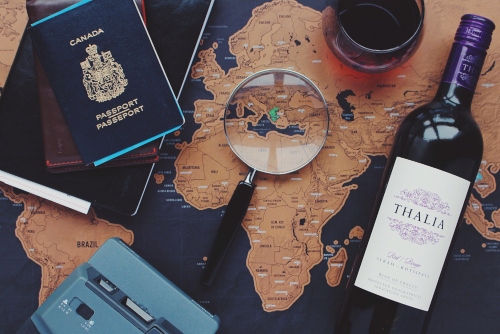
There is an undeniable art to crafting a well-balanced travel itinerary. The right blend of timing, logistics, and flexibility can mean the difference between a stress-filled trip and a beautifully fluid adventure. The goal is to eliminate confusion and avoid last-minute decisions by organizing the details in a way that feels both intuitive and liberating. From selecting ideal flight times to booking accommodations near key landmarks, every choice contributes to the overall flow. When done well, a seamless itinerary lets travelers focus less on logistics and more on exploration, enjoyment, and the serendipity that comes with being far from home but perfectly in sync with the moment.
Build the Trip Around Priorities
Every great itinerary begins with a clear vision of what the trip is meant to accomplish. Whether the focus is sightseeing, relaxation, cultural discovery, or attending a specific event, the itinerary should support that purpose from start to finish. Travelers benefit from outlining must-see attractions and time-sensitive experiences early in the process to ensure these elements are properly prioritized. Once anchor points are identified, supporting activities can be slotted in with plenty of breathing room to avoid a rushed pace. It helps to consider the energy level required for each activity and to distribute high-impact moments with interludes for slower, more restorative experiences. A good itinerary doesn't cram the schedule but instead flows in a way that leaves space for both structure and spontaneity.
Coordinate Flights with Local Rhythms
Flight timing can affect everything from sleep schedules to how smoothly travelers transition into their destination. When planning international routes or multi-city itineraries, choosing flights that arrive during the day offers a head start on adjusting to new time zones and makes ground transfers simpler and safer. It also provides a buffer for delays without disrupting evening check-ins or dinner reservations. For connecting flights, longer layovers can reduce stress and offer a chance to explore airports known for unique amenities or efficient design. Equally important is aligning departure times with the natural rhythm of the return trip, avoiding red-eyes whenever possible to ensure arrival home without total exhaustion. Small adjustments in flight planning can pay off with smoother transitions and more energy at both ends of the journey.
Map Stays to Nearby Experiences
Choosing where to stay should be driven not just by price or popularity but by strategic proximity to the places travelers plan to spend the most time. Lodging within walking distance of major attractions or public transport hubs can eliminate hours of unnecessary commuting. Boutique hotels, chic rentals, and historic inns often offer a sense of place that enhances the destination experience, especially when selected in culturally rich neighborhoods. It helps to use interactive maps to cross-reference accommodations with landmarks, restaurants, and entertainment options. Many travelers also rely on digital platforms with user reviews to uncover standout stays with attentive service and local character.
Design Days With Rhythm and Flow
Well-structured daily plans avoid the trap of rigid scheduling while still offering a clear path forward. Mornings tend to be best for high-energy activities like sightseeing or guided tours, particularly before crowds build or heat intensifies. Afternoons can be reserved for museums, scenic walks, or shopping excursions, while evenings lend themselves to fine dining, performances, or rooftop cocktails. Incorporating pauses in each day allows for the unexpected, whether it's stumbling across a street market or indulging in an unplanned coffee break at a sidewalk café. It's also smart to allow a buffer day between cities or at the midpoint of longer trips to reset the pace and recharge. The most enjoyable itineraries follow a natural rhythm that respects both the excitement of discovery and the need to occasionally pause and savor.
Prepare Tools to Stay Flexible
While detailed planning is essential, equally important is building in flexibility. Weather, opening hours, and local happenings can change without warning, so having a toolkit of alternatives helps keep the mood relaxed when plans shift. Apps that track public transport, ticket availability, and local events can help adjust the itinerary on the fly. Keeping digital or printed copies of reservations, tickets, and maps ensures smooth transitions even when Wi-Fi is limited. Some travelers also use shared calendars to sync plans with travel companions, reducing confusion and keeping everyone aligned. Leaving a few hours open in the schedule provides space for rest or unexpected discoveries without creating a sense of falling behind. Flexibility, when well-prepared, allows for a more rewarding and less stressful journey.
A seamless travel itinerary is less about perfection and more about thoughtful flow. It supports the spirit of exploration while minimizing guesswork, delays, and confusion. The best plans anticipate transitions, balance ambition with ease, and leave room for joy to appear between the lines. When the pieces align—flights, stays, activities, and downtime—travel becomes more than movement. It becomes a well-orchestrated experience where each element enhances the others. From initial brainstorming to the final return, careful planning ensures the journey unfolds with grace, rhythm, and just enough flexibility to invite wonder along the way.
EDITORIAL POLICY
The Flash List is dedicated to providing trustworthy editorial content by maintaining strict ethical standards, journalistic integrity, and credible professionalism regardless of any remuneration as working media. The Flash List is not affiliated with third-party companies mentioned and makes no endorsement or guarantee expressed or implied. The preceding article, which contains affiliated link(s) for which compensation was received, is intended for informational reference only and does not constitute advice of any kind. Moreover, a qualified professional should be consulted regarding any lifestyle consideration, medical treatment, or monetary transaction, etc. Content is published in accordance with USFTC regulations and terms and conditions.
MORE ON THE FLASH LIST
































